Counting Down To ICON's Launch
Counting Down to ICON's Launch
In October 2018, we're launching the Ionospheric Connection Explorer, or ICON, to study Earth's dynamic interface to space.

The region of Earth's atmosphere on the edge of space plays a crucial role in our technology and exploration. This is where many of our satellites — including the International Space Station — orbit, and changing conditions in this region can cause problems for those satellites and disrupt communications signals.
This part of the atmosphere is shaped by a complicated set of factors. From below, regular weather on Earth can propagate upwards and influence this region. From above, electric and magnetic fields and charged particles in space — collectively called space weather — can also trigger changes. ICON's goal is to better understand this region and how it's shaped by these outside influences.
10-mile-per-hour sensitivity
Though the ICON spacecraft zooms around Earth at upwards of 14,000 miles per hour, its wind-measuring instrument, named MIGHTI, can detect changes in wind speed smaller than 10 miles per hour. MIGHTI measures the tiny shifts in color caused by the motion of glowing gases in the upper atmosphere. Then, by making use of the Doppler effect — the same phenomenon that makes an ambulance siren change pitch as it passes you — scientists can figure out the gases' speed and direction.

97-minute orbital period
ICON circles Earth in just over an hour and a half, completing nearly 15 orbits per day. Its orbit is inclined by 27 degrees, so over time, its measurements will completely cover the latitudes scientists are most interested in, near the equator.

8 1/3-foot solar panel
ICON doesn't carry any onboard fuel. Instead, its single solar panel — measuring about 100 inches long and 33 inches wide, a little bit bigger than a standard door — produces power for the spacecraft. In science mode, ICON draws about 209-265 Watts of power.
7 years of teamwork
Now getting ready for launch, the ICON team has been hard at work ever since the idea for the mission was selected for further study in 2011.
634 pounds
How much does good science weigh? In ICON's case, about as much as vending machine. The observatory weighs 634 pounds altogether.
5 snapshots per minute from FUV
Because ICON travels so fast, its Far Ultraviolet instrument takes eight snapshots per second of passing structures. This avoids blurring the images and captures the fine detail scientists need. But available bandwidth only allows FUV to send 5 images per minute, so the instrument uses a de-blurring technique called time-delay integration to combine 12 seconds' worth of data into a single image.

Image credit: Mark Belan
4 types of instruments collecting data in tandem
ICON carries four distinct instruments to study Earth's boundary to space.
2 MIGHTIs (Michelson Interferometer for Global High-resolution Thermospheric Imaging): Built by the Naval Research Laboratory in Washington, D.C., to observe the temperature and speed of the neutral atmosphere. There are two identical MIGHTI instruments onboard ICON.
2 IVMs (Ion Velocity Meter): Built by the University of Texas at Dallas to observe the speed of the charged particle motions, in response to the push of the high-altitude winds and the electric fields they generate. ICON carries two, and they are the mission’s only in situ instruments.
EUV (Extreme Ultra-Violet instrument): Built by the University of California, Berkeley to capture images of oxygen glowing in the upper atmosphere, in order to measure the height and density of the daytime ionosphere.
FUV (Far Ultra-Violet instrument): Built by UC Berkeley to capture images of the upper atmosphere in the far ultraviolet light range. At night, FUV measures the density of the ionosphere, tracking how it responds to weather in the lower atmosphere. During the day, FUV measures changes in the chemistry of the upper atmosphere — the source for the charged gases found higher up in space.
360 miles above Earth
ICON orbits about 360 miles above Earth, near the upper reaches of the ionosphere — the region of Earth's atmosphere populated by electrically charged particles. From this vantage point, ICON combines remote measurements looking down along with direct measurements of the material flowing around it to connect changes throughout this region.

2 missions working together
NASA's GOLD mission — short for Global-scale Observations of the Limb and Disk — launched aboard a commercial communications satellite on Jan. 25, 2018. From its vantage point in geostationary orbit over Brazil, GOLD gets a full-disk view of the same region of space that ICON studies, helping scientists connect the big picture with the details.
1 gigabit of data per day
Together, ICON's instruments produce and downlink about 1 gigabit of data per day — about 125 megabytes. This adds up to about 1 gigabyte per week. ICON produces 10 different data products, ranging from measurements of wind speeds and ionospheric density to more complex models, that will help scientists shed new light on this ever-changing region.
ICON’s launch is scheduled for 4 a.m. EDT on Oct. 26, and NASA TV coverage begins at 3:45 a.m. Stay tuned on Twitter and Facebook for the latest on ICON.
Make sure to follow us on Tumblr for your regular dose of space: http://nasa.tumblr.com.
More Posts from Nasa and Others
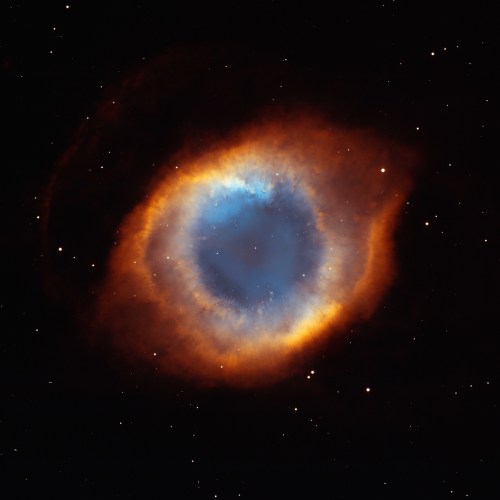
Say hello to the Helix Nebula 👋
In 2001 and 2002, our Hubble Space Telescope looked at the Helix Nebula and it looked right back! This planetary nebula is right in our cosmic neighborhood, only about 650 light-years away. Gigantic for this type of cosmic object, the Helix Nebula stretches across 2 to 3 light-years.
With no actual connection to planets, planetary nebulas like this one are produced when a medium-mass star dies and sloughs off its outer layers. These gaseous layers are expelled into space at astonishing speeds where they light up like fireworks. The Helix Nebula is one of the closest planetary nebulas to Earth, giving scientists an up-close view of its strange affairs.
Through Hubble’s observations, scientists have learned that the Helix Nebula isn’t doughnut-shaped as it appears. Instead it consists of two disks that are nearly perpendicular to each other — the nebula looks like an eye and bulges out like one too!
Hubble has also imaged comet-like tendrils that form a pattern around the central star like the spokes on a wagon wheel, likely resulting from a collision between gases. The dying star spews hot gas from its surface, which crashes into the cooler gas that it ejected 10,000 years before. Eventually the knots will dissipate into the cold blackness of interstellar space.
Make sure to follow us on Tumblr for your regular dose of space: http://nasa.tumblr.com.
Sample Return Robot Challenge
It’s been a long, technical journey for the seven teams competing this week in Level 2 of our Sample Return Robot Challenge. Over the past five years, more than 50 teams have attempted the $1.5 million competition, which is looking to develop autonomous capabilities in robotics. Basically, we want robots that can think and act on their own, so they can travel to far off places – like Mars – and we can rely on them to work on their own when a time delay or unknown conditions could be factors.
This challenge has two levels, both requiring robots to navigate without human control and Earth-based tools (like GPS or magnetic compassing). The robot has to find samples, pick them up and deliver them to home base. Each of the final seven teams succeeded at Level 1, where they had to find one sample, during previous competition years. Now, they have a shot at the much more difficult Level 2, where they have a two-hour window to locate up to 10 samples of varying point values, but they don’t know where to look or what exactly they’re looking for.
Get to know the final seven, and be sure to cheer them on as we live-stream the competition all day Sept. 4 and 5.

West Virginia University Mountaineers Hailing from: Morgantown, West Virginia # of Team Members: 12
Behind the Name: In West Virginia, we call ourselves mountaineers. We like to explore unknown places and be inspired by nature.
Motivation: To challenge ourselves. Through this venture, we are also hoping to create research and career opportunities for everyone on the team.
Strategy: Keeping things simple. Through participating in SRR challenge during the last three years, we have gone a long way in streamlining our system.
Obstacles: One of the biggest challenges was finding and nurturing the talent of individual team members and coordinating the team in making real progress on time.
Prize Plans: We donated 50 percent of our 2015 Level 2 prize money to create an undergraduate “Robotics Achievement Fellowship” at WVU. The rest of the funding was allocated to support team member professional development, such as traveling to conferences. A similar model will be used if we win in 2016.
Extra Credit: We did an Easter egg hunt with our robot, Cataglyphis (named after a desert ant with extraordinary navigation capabilities), last year.

Survey Hailing from: Los Angeles, California # of Team Members: Jascha Little
Behind the Name: It's short, simple, and what the robot spends a lot of its time doing.
Team History: We work together, and we all thought the challenge sounded like an excellent way to solve the problem of what to do with all our free time.
Motivation: We are all engineers and software developers that already work on robotics projects. Reading too much sci-fi when we were kids probably got us to this point.
Strategy: We are trying to solve the search-and-return problem primarily with computer vision. This is mostly to reduce cost. Our budget can't handle high quality IMUs or LIDAR.
Prize Plans: Probably build more robots.
Extra Credit: Favorite pop culture robot is Bender (Futurama). Alcoholic robots are the best.

Alabama Astrobotics (The University of Alabama) Hailing from: Tuscaloosa, Alabama # of Team Members: 33
Behind the Name: “Alabama Astrobotics” was chosen to reflect our school affiliation and our mission to design robotics for various space applications.
Team History: Alabama Astrobotics has been involved with other NASA robotics competitions in the past. So, the team is accustomed to the competition environment.
Motivation: We are pleased to have advanced to Level 2 in our first year in the competition (the first team to do so), but we are also not satisfied with just advancing. Our goal is to try to solve Level 2.
Strategy: Our strategy is similar to that used in Level 1. Our Level 1 approach was chosen so that it would translate to Level 2 as well, thus requiring fewer customizations from Level 1 to Level 2.
Obstacles: As a university team, the biggest challenge was not having all our team members available to work on the robot during the time since Level 1 completed in June. Most of my team members have either graduated or have summer internships, which took them away from campus after Level 1. Thus, we didn’t have the manpower to address the additional Level 2 technical challenges.
Prize Plans: Any prize money would be donated to the University of Alabama College of Engineering.
Extra Credit: Alabama Astrobotics also competes in the annual NASA Robotic Mining Competition held at the Kennedy Space Center each May. We have been fortunate enough to win that competition three times in its seven year history, and we are the only team to win it more than once.

MAXed-Out Hailing From: Santa Clara, California # of Team Members: 4
Behind the Name: Several reasons: Team leader is Greg Maxwell, and his school nick name was Max. Our robot’s name is Max, which is one of the most common name for a dog, and it is a retriever. Our efforts on this has been too the max…. i.e. MAXed-Out. Our technology requirements have been pushed to their limits - Maxed-Out.
Team History: Greg Maxwell started a Meet-up “Silicon-Valley Robot Operating System” SV-ROS that was to help teach hobbyists how to use ROS on their robots. We needed a project to help implement and make real what we were teaching. This is the third contest we have participated in.
Motivation: There is still such a long way to go to make robots practical. Every little bit we can contribute makes them a little bit better and smarter. Strategy: Level 1 was a test, as a minimum viable product to prove the tech worked. For Level 2, we had to test and add obstacle avoidance to be able to cover the larger area with trees and slopes, plus add internal guidance to allow for Max to be out of the home base camera tracking system.
Obstacles: Lack of a cost effective robot platform that met all the requirements; we had to build our own. Also time and money. The two months (between Level 1 and 2) went really fast, and we had to abandon lots of cool ideas and focus on the basics.
Prize Plans: Not sure, but pay off the credit cards comes to mind. We might open-source the platform since it works pretty well. Or we will see if it works as expected. We may also take a break / vacation away from robots for a while.
Extra Credit: My nephew, Max Hieges, did our logo, based on the 1960-era Rat Fink sticker.

Mind & Iron Hailing From: Seattle, Washington # of Team Members: 5
Behind the Name: It was the original title for Isaac Asimov’s “I Robot,” and we thought it was a good combination of what a robot actually is – mechanical and brains.
Team History: Three of us were WPI undergrads and met at school; two of us did our master’s degrees at the University of Washington, where we met another member, and then another of us brought on a family member.
Motivation: We saw that there was an opportunity to compete in a challenge that seemed like there was a reasonable solution that we could tackle with a limited budget. We saw three years of competition and thought that we had some better ideas and a pretty good shot at it. Strategy: The samples and the terrain are much more complex in Level 2, and we have to be more careful about our navigation. We are using the same tools, just expanding their capability and scope.
Obstacles: The team being spread over three different time zones has been the biggest challenge. We are all doing this in our free time after work. The internet has been really handy to get things done.
Prize Plans: Probably invest in more robot stuff! And look for other cool projects we can work on, whether it’s another NASA challenge or other projects.
Extra Credit: We are hoping to collaborate with NASA on the professional side with surgical robots to exoskeletons. Challenge-related, our robot is mostly made of plywood – it is a composite fiber material that works well for fast development using cheap materials.

Sirius Hailing From: South Hadley, Massachusetts # of Team Members: 4
Team History: We are a family. Our kids are both robot builders who work for Boston Dynamics, and they have a lot of robot expertise. Both of our kids are robotics engineers, and my wife is intrinsically brilliant, so the combination of that makes for a good team.
Motivation: Because it’s a really hard challenge. It’s one thing to drive a robot with a remote control; it’s another to do the whole thing autonomously. If you make a single change in a robot, it could throw everything off. You have to think through every step for the robot. On a basic level, to learn more about robotics and to win the prize. Strategy: Very similar to Level 1. We approached Level 1 knowing Level 2 was there, so our strategy was no different.
Obstacles: It is very difficult to do object recognition under unpredictable conditions – sun, clouds, weather, sample location. The biggest challenge was trying to recognize known and unknown objects under such a wide variety of environmental possibilities. And the terrain is very different – you don’t know what you’re going to find out there.
Prize Plans: We haven’t really thought about it, but we will give some away, and we’ll invest the rest in our robotics company.
Extra Credit: The first robot we had was called Robo-Dad. Dan was training to be an astronaut in the 1990s, so we built a toy remote-controlled truck that Dan - in Texas - could control via the internet in the house. Robo-Dad had a camera that Dan could see the house with. It had two-way communication; it was a little before it’s time – the internet was very slow.

Team AL Hailing From: Ontario, Canada # of Team Members: 1
Team History: I was looking for competitions that were open, and my dad had followed the Centennial Challenges for a while, so he alerted me to this one. I was already doing rover projects, and it was appropriate and awesome and interesting. I felt like I could do it as a team of one.
Motivation: Difficult challenges. I’m definitely inspired seeing really cool robots that other people are building. New emerging tech really motives me to create new things.
Strategy: I showed up with another robot to Level 2. I built three, but ran with only two. It did make it more complicated, but the strategy was to send them to different areas and have them be able to communicate with each other. Everything physically was the same from Level 1. The idea is that they would all go out with different missions and I would maximize field coverage.
Obstacles: Time. More time would always be nice. Being able to make something like this happen under a timeline is really difficult. I feel like I accomplished a lot for a year. Also, manpower – being a team of 1, I have to do all of the paperwork and other related stuff, but also carry the hardware and do the programming. You have to multitask a lot.
Prize Plans: I’d like to start a robotics company, and be able to expand some of the things I’ve been working on associated with technology and maker education.
Extra Credit: My story is not linear. A lot of people are surprised to hear that my background is in molecular biology and research. I once lived in a tent in Madagascar for a few months to do a biodiversity study, and I have multiple publications from that side of my life. I am in a whole different place now.
The competition is one of many run by our Centennial Challenges program, which looks to the public – citizen inventors, academics, makers, artists, YOU – to help us advance technology and bring a different perspective to obstacles that gets us outside of our traditional solving community. See what else we’re working on here.
Make sure to follow us on Tumblr for your regular dose of space: http://nasa.tumblr.com
Celebrating Women’s History Month: Most Recent Female Astronauts
For Women’s History Month, NASA and the International Space Station celebrate the women who conduct science aboard the orbiting lab. As of March 2019, 63 women have flown in space, including cosmonauts, astronauts, payload specialists, and space station participants. The first woman in space was Russian cosmonaut Valentina Tereshkova who flew on Vostok 6 on June 16, 1963. The first American woman in space, Sally Ride, flew aboard the Space Shuttle STS-7 in June of 1983.
If conducted as planned, the upcoming March 29 spacewalk with Anne McClain and Christina Koch would be the first all-female spacewalk. Women have participated in science on the space station since 2001; here are the most recent and some highlights from their scientific work:
Christina Koch, Expedition 59

Christina Koch (pictured on the right) becomes the most recent woman in space, launching to the space station in mid-March to take part in some 250 research investigations and technology demonstrations. Koch served as station chief of the American Samoa Observatory and has contributed to the development of instruments used to study radiation particles for the Juno mission and the Van Allen Probe.
Anne McClain, Expedition 57/58, 59

Flight Engineer Anne McClain collects samples for Marrow, a long-term investigation into the negative effects of microgravity on the bone marrow and blood cells it produces. The investigation may lead to development of strategies to help prevent these effects in future space explorers, as well as people on Earth who experience prolonged bed rest. McClain holds the rank of Lieutenant Colonel as an Army Aviator, with more than 2,000 flight hours in 20 different aircraft.
Serena M. Auñón-Chancellor, Expedition 56/57

Serena Auñón-Chancellor conducts research operations for the AngieX Cancer Therapy inside the Microgravity Science Glovebox (MSG). This research may facilitate a cost-effective drug testing method and help develop safer and more effective vascular-targeted treatments. As a NASA Flight Surgeon, Auñón-Chancellor spent more than nine months in Russia supporting medical operations for International Space Station crew members.
Peggy Whitson, Expeditions 5, 16, 50, 51/52

Astronaut Peggy Whitson holds numerous spaceflight records, including the U.S. record for cumulative time in space – 665 days – and the longest time for a woman in space during a single mission, 289 days. She has tied the record for the most spacewalks for any U.S. astronaut and holds the record for the most spacewalk time for female space travelers. She also served as the first science officer aboard the space station and the first woman to be station commander on two different missions. During her time on Earth, she also is the only woman to serve as chief of the astronaut office. Here she works on the Genes in Space-3 experiment, which completed the first-ever sample-to-sequence process entirely aboard the International Space Station. This innovation makes it possible to identify microbes in real time without having to send samples back to Earth, a revolutionary step for microbiology and space exploration.
Kate Rubins, Expedition 48/49

The Heart Cells investigation studies the human heart, specifically how heart muscle tissue contracts, grows and changes its gene expression in microgravity and how those changes vary between subjects. In this image, NASA astronaut Kate Rubins conducts experiment operations in the U.S. National Laboratory. Rubins also successfully sequenced DNA in microgravity for the first time as part of the Biomolecule Sequencer experiment.
Samantha Cristoforetti, Expedition 42/43

The first Italian woman in space, European Space Agency (ESA) astronaut Samantha Cristoforetti conducts the SPHERES-Vertigo investigation in the Japanese Experiment Module (JEM). The investigation uses free-flying satellites to demonstrate and test technologies for visual inspection and navigation in a complex environment.
Elena Serova, Expedition 41/42

Cosmonaut Elena Serova, the first Russian woman to visit the space station, works with the bioscience experiment ASEPTIC in the Russian Glavboks (Glovebox). The investigation assessed the reliability and efficiency of methods and equipment for assuring aseptic or sterile conditions for biological investigations performed on the space station.
Karen Nyberg, Expedition 36/37

NASA astronaut Karen Nyberg sets up the Multi-Purpose Small Payload Rack (MSPR) fluorescence microscope in the space station’s Kibo laboratory. The MSPR has two workspaces and a table used for a wide variety of microgravity science investigations and educational activities.
Sunita Williams, Expeditions 32/33, 14/15

This spacewalk by NASA astronaut Sunita Williams and Japan Aerospace Exploration Agency (JAXA) astronaut Aki Hoshide, reflected in Williams’ helmet visor, lasted six hours and 28 minutes. They completed installation of a main bus switching unit (MBSU) and installed a camera on the International Space Station’s robotic Canadarm2. Williams participated in seven spacewalks and was the second woman ever to be commander of the space station. She also is the only person ever to have run a marathon while in space. She flew in both the space shuttle and Soyuz, and her next assignment is to fly a new spacecraft: the Boeing CST-100 Starliner during its first operational mission for NASA’s Commercial Crew Program.
Cady Coleman, Expeditions 26/27

Working on the Capillary Flow Experiment (CFE), NASA astronaut Catherine (Cady) Coleman performs a Corner Flow 2 (ICF-2) test. CFE observes the flow of fluid in microgravity, in particular capillary or wicking behavior. As a participant in physiological and equipment studies for the Armstrong Aeromedical Laboratory, she set several endurance and tolerance records. Coleman logged more than 4,330 total hours in space aboard the Space Shuttle Columbia and the space station.
Tracy Caldwell Dyson, Expedition 24

A system to purify water for use in intravenous administration of saline would make it possible to better treat ill or injured crew members on future long-duration space missions. The IVGEN investigation demonstrates hardware to provide that capability. Tracy Caldwell Dyson sets up the experiment hardware in the station’s Microgravity Science Glovebox (MSG). As noted above, she and Shannon Walker were part of the first space station crew with more than one woman.
Shannon Walker, Expedition 24/25

Astronaut Shannon Walker flew on Expedition 24/25, a long-duration mission that lasted 163 days. Here she works at the Cell Biology Experiment Facility (CBEF), an incubator with an artificial gravity generator used in various life science experiments, such as cultivating cells and plants on the space station. She began working in the space station program in the area of robotics integration, worked on avionics integration and on-orbit integrated problem-solving for the space station in Russia, and served as deputy and then acting manager of the On-Orbit Engineering Office at NASA prior to selection as an astronaut candidate.
Stephanie Wilson, STS-120, STS-121, STS-131

Astronaut Stephanie Wilson unpacks a Microgravity Experiment Research Locker Incubator II (MERLIN) in the Japanese Experiment Module (JEM). Part of the Cold Stowage Fleet of hardware, MERLIN provides a thermally controlled environment for scientific experiments and cold stowage for transporting samples to and from the space station. Currently serving as branch chief for crew mission support in the Astronaut Office, Wilson logged more than 42 days in space on three missions on the space shuttle, part of the Space Transportation System (STS).
Other notable firsts:
• Roscosmos cosmonaut Svetlana Savitskaya, the first woman to participate in an extra-vehicular activity (EVA), or spacewalk, on July 25, 1984
• NASA astronaut Susan Helms, the first female crew member aboard the space station, a member of Expedition 2 from March to August 2001
• NASA astronaut Peggy Whitson, the first female ISS Commander, April 2008, during a six-month tour of duty on Expedition 16
• The most women in space at one time (four) happened in 2010, when space shuttle Discovery visited the space station for the STS-131 mission. Discovery’s crew of seven included NASA astronauts Dorothy Metcalf-Lindenburger and Stephanie Wilson and Japan Aerospace Exploration Agency (JAXA) astronaut Naoko Yamazaki. The space station crew of six included NASA astronaut Tracy Caldwell Dyson.
• Susan Helms shares the record for longest single spacewalk, totaling 8 hours 56 minutes with fellow NASA astronaut Jim Voss.
• Expedition 24 marked the first with two women, NASA astronauts Shannon Walker and Tracy Caldwell Dyson, assigned to a space station mission from April to September, 2010
• The 2013 astronaut class is the first with equal numbers of women and men.
• NASA astronaut Anne McClain became the first woman to live aboard the space station as part of two different crews with other women: Serena Auñón-Chancellor in December 2018 and currently in orbit with Christina Koch.
Make sure to follow us on Tumblr for your regular dose of space: http://nasa.tumblr.com
It’s a U.S. Record! Cumulative Days in Space: 383

Today, Astronaut Scott Kelly has broken the record for longest time spent in space by a U.S. astronaut! Over the course of his four missions, Kelly has spent 383 cumulative days in space. This record was previously held by Astronaut Mike Fincke, with 382 days in space over three flights. Here are some more fun facts about this milestone:
4: The number of humans that have spent a year or more in orbit on a single mission
215 Days: The record currently held by Mike Lopez-Alegria for most time on a single spaceflight by U.S. astronaut. On Oct. 29, Kelly will break this record
377 Days: The current record for most days in space by a U.S. female astronaut, held by Peggy Whitson
879 Days: The record for most cumulative days in space by a human, currently held by Russian cosmonaut Gennady Padalka

Why Spend a Year in Space?
Kelly’s One-Year Mission is an important stepping stone on our journey to Mars and other deep space destinations. These investigations are expected to yield beneficial knowledge on the medical, psychological and biomedical challenges faced by astronauts during long-duration spaceflight.
Kelly is also involved in the Twins Study, which consists of ten separate investigations that are being conducted with his twin brother, who is on Earth. Since we are able to study two individuals who have the same genetics, but are in different environments for one year, we can gain a broader insight into the subtle effects and changes that may occur in spaceflight.
For regular updates on Kelly’s one-year mission aboard the space station, follow him on social media: Facebook, Twitter, Instagram.
Make sure to follow us on Tumblr for your regular dose of space: http://nasa.tumblr.com
What’s Up for January?

A meteor shower, a binocular comet and the winter circle of stars. Here are the details:
Quadrantid Meteor Shower

The Quadrantid meteor shower on Jan. 4 will either sizzle or fizzle for observers in the U.S. The shower may favor the U.S. or it could favor Europe depending on which prediction turns out to be correct. For viewing in the United States, observers should start at 3 a.m. EST. The peak should last about two hours with rates of 120 meteors per hour predicted in areas with a dark sky.
Comet Catalina

In the middle of the month, midnight to predawn will be primetime for viewing Comet Catalina. It should be visible with binoculars if you have a dark sky, but a telescope would be ideal. Between the 14th and 17th the comet will pass by two stunning galaxies: M51, the whirlpool galaxy and M101, a fainter spiral galaxy.
Constellation Orion

Winter is also the best time to view the constellation Orion in the southeastern sky. Even in the city, you’ll see that it’s stars have different colors. Not telescope needed, just look up a few hours after sunset! The colorful stars of Orion are part of the winter circle of stars.
Make sure to follow us on Tumblr for your regular dose of space: http://nasa.tumblr.com
How Airglow Can Help Us Understand the Sun’s Influence on Earth
You may have seen the famous blue marble or pale blue dot images showing Earth from 18,000 and 3.7 billion miles away, respectively. But closer to home — some 300 miles above Earth's surface — you might encounter an unfamiliar sight: vibrant swaths of red and green or purple and yellow light emanating from the upper atmosphere.
This light is airglow.

Airglow is created when atoms and molecules in the upper atmosphere, excited by sunlight, emit light to shed excess energy. Or, it can happen when atoms and molecules that have been ionized by sunlight collide with and capture a free electron. In both cases, these atmospheric particles emit light in order to relax again. The process is similar to how auroras are created, but while auroras are driven by high-energy solar wind, airglow is energized by day-to-day solar radiation.

Since sunlight is constant, airglow constantly shines throughout Earth’s atmosphere, and the result is a tenuous bubble of light that closely encases our planet. Its light is too dim to see easily except in orbit or on the ground with clear, dark skies and a sensitive camera — it’s one-tenth as bright as the light given off by all the stars in the night sky.

Airglow highlights a key part of our atmosphere: the ionosphere. Stretching from roughly 50 to 400 miles above Earth’s surface, the ionosphere is an electrified layer of the upper atmosphere generated by extreme ultraviolet radiation from the Sun. It reacts to both terrestrial weather below and solar energy streaming in from above, forming a complex space weather system. Turbulence in this ever-changing sea of charged particles can manifest as disruptions that interfere with Earth-orbiting satellites or communication and navigation signals.

Understanding the ionosphere’s extreme variability is tricky because it requires untangling interactions between the different factors at play — interactions of which we don’t have a clear picture. That’s where airglow comes in. Each atmospheric gas has its own favored airglow color, hangs out at a different height and creates airglow by a different process, so we can use airglow to study different layers of the atmosphere.

Airglow carries information on the upper atmosphere’s temperature, density, and composition, but it also helps us trace how particles move through the region itself. Vast, high-altitude winds sweep through the ionosphere, pushing its contents around the globe — and airglow’s subtle dance follows their lead, highlighting global patterns.

Two NASA missions take advantage of precisely this effect to study the upper atmosphere: ICON — short for Ionospheric Connection Explorer — and GOLD — Global-scale Observations of the Limb and Disk.
ICON focuses on how charged and neutral gases in the upper atmosphere behave and interact, while GOLD observes what drives change — the Sun, Earth’s magnetic field or the lower atmosphere — in the region.

By imaging airglow, the two missions will enable scientists to tease out how space and Earth’s weather intersect, dictating the region’s complex behavior.
Keep up with the latest in NASA's airglow and upper atmosphere research on Twitter and Facebook or at nasa.gov/sunearth.
Make sure to follow us on Tumblr for your regular dose of space: http://nasa.tumblr.com.
Ever get a random craving for a food when in space?
First All-Woman Spacewalk
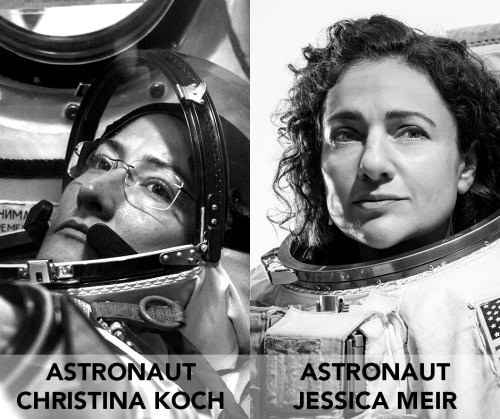
NASA astronauts and best friends, Christina Koch and Jessica Meir, made history Friday, October 18, 2019, by conducting the first all-woman spacewalk outside the International Space Station (ISS)! The Expedition 61 flight engineers ventured into the vacuum of space at 7:38 a.m. EDT to swap out a failed power controller that regulates the batteries used to collect and distribute power to the orbital laboratory – a task that took a total of seven hours and 17 minutes to complete.
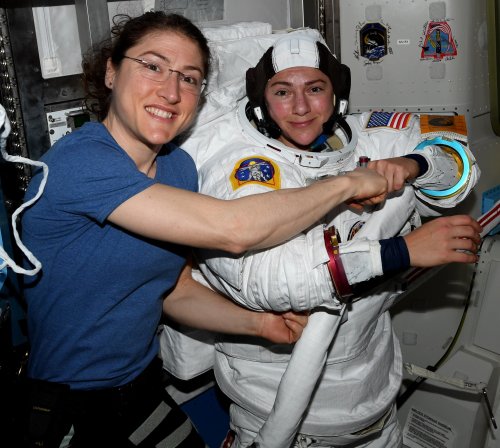
This was Koch’s fourth spacewalk and Meir’s first. Both women, selected as astronaut candidates in 2013, are on their first trip to work and live aboard the space station. Meir will be the 15th woman to spacewalk, and the 14th U.S. woman.
Get to know the astronauts
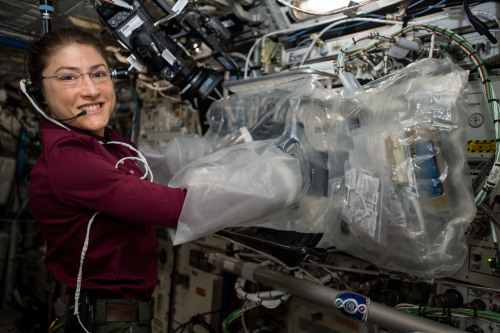
In addition to being an astronaut, Christina Koch is an engineer and physicist. Her career has taken her to extreme parts of the planet to conduct scientific field missions in places like the Antarctic South Pole and Greenland’s Summit Station. Prior to being selected as an astronaut candidate in 2013, she worked as an Electrical Engineer at our Goddard Space Flight Center’s Laboratory for High Energy Astrophysics.
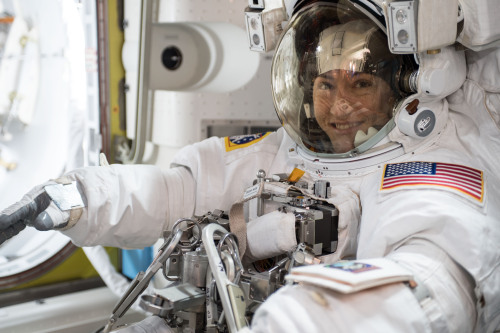
Koch left Earth on March 14, 2019, and is slated to set a record for the longest single spaceflight by a woman with an expected total of 328 days in space. Her extended mission will provide researchers the opportunity to observe the effects of long-duration spaceflight on a female body in preparation for human missions to the Moon and Mars.
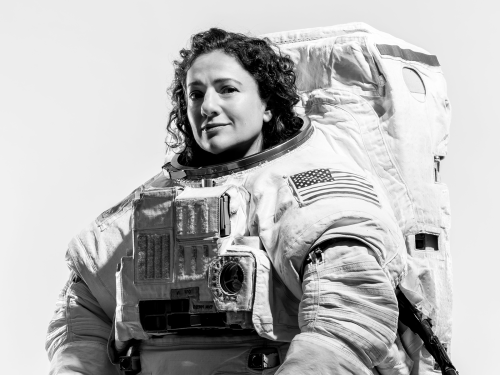
Jessica Meir dreamed of the day she would make it to space since the age of five. That dream became a reality on Wednesday, Sept. 25, 2019 as she left Earth on her first spaceflight – later floating into her new home aboard the International Space Station.
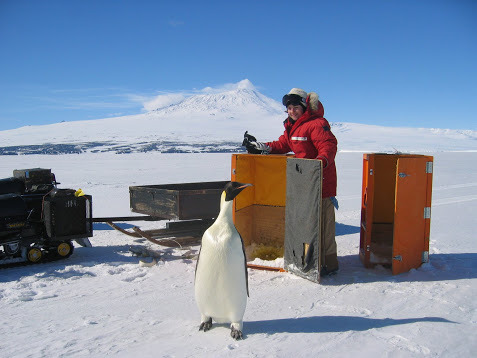
While Meir’s new home is more than 200 miles over the Earth, she is no stranger to extreme environments. She studied penguins in Antarctica and mapped caves in Italy – both of which prepared her for the ultimate extreme environment: space.
#AllWomanSpacewalk, what’s the deal?
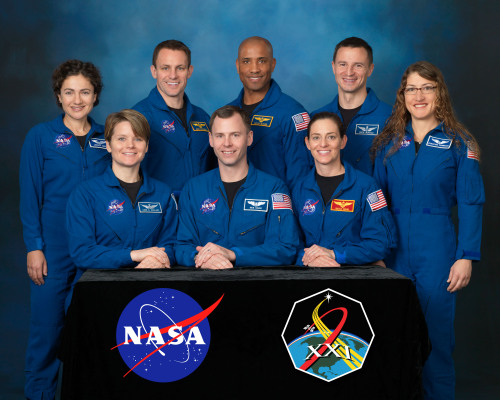
The all-woman spacewalk wasn’t something we purposefully planned; it is a testament to the increasing number of female astronauts in the space program. For example, Koch’s and Meir’s 2013 class of astronaut candidates was 50 percent women!
When asked in an interview about the importance of conducting her mission and this spacewalk, Koch said,
“In the end, I do think it’s important, and I think it’s important because of the historical nature of what we’re doing. In the past women haven’t always been at the table. It’s wonderful to be contributing to the space program at a time when all contributions are being accepted, when everyone has a role. That can lead in turn to increased chance for success. There are a lot of people who derive motivation from inspiring stories of people who look like them, and I think it’s an important story to tell.”
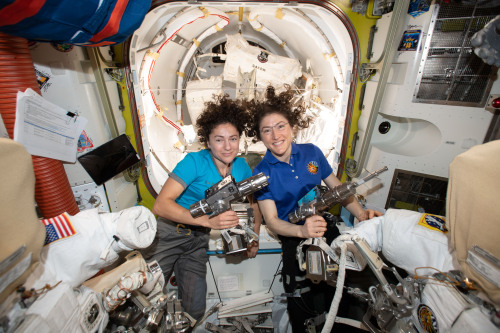
It’s important to note that spacewalks are not easy; astronauts typically describe them as the most physically challenging thing they do. Assignments are made on the basis of which astronauts are the best prepared to accomplish the tasks at hand under the conditions at the time. Today, Koch and Meir were the top astronauts for the job.
Women are no stranger to spacewalks!

While this was the first spacewalk to be conducted entirely by women, women are no strangers to spacewalks. Exactly 35 years and one week ago, Kathryn Sullivan (pictured above) made her own historic debut as the first U.S. woman to conduct a spacewalk. Since then, a total of 14 women (15 including Jessica) have ventured into the vacuum of space on 40 different spacewalks. Former Astronaut Peggy Whitson performed a record number of 10! From Astronauts to mission directors, women have been making their mark at the agency for decades now. A few of our recent pioneers are:
Astronaut Kate Rubins: First person to sequence DNA in space
Astronaut Peggy Whitson: First woman to command the ISS
Sandra Cauffman: Director of our Earth Science’s Division
Nicola Fox: Director of our Heliophysics Division
Lori Glaze: Director of our Planetary Science Division
Coming soon: The first woman to walk on the Moon
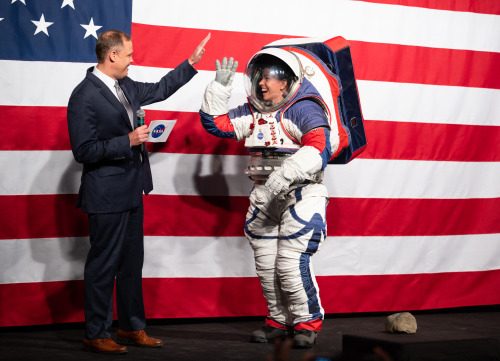
The first all-woman spacewalk is a milestone worth noting and celebrating as we look forward to putting the first woman and the next man on the Moon by 2024 with our Artemis lunar exploration program. With today’s historic event, we once again set a precedence for women to lead in space exploration.
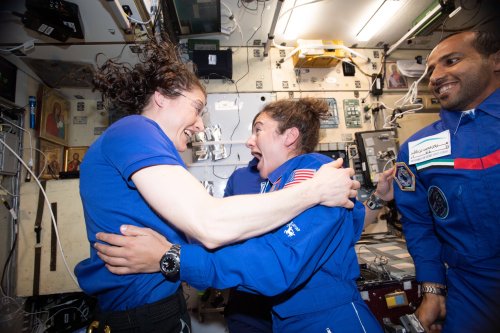
We hope achievements such as this provide inspiration to you all around the world, proving that hard work can lead you to great heights. This is not just a historic day for NASA, but a moment we can all feel proud of.
Didn’t have time to tune in? Check out the replay, here. Koch was wearing the spacesuit with red stripes, while Meir’s had no stripes.
If you’d like to keep up with Christian Koch and Jessica Meir’s work 254 miles above planet Earth, follow them on Twitter at @Astro_ Christina and @Astro_Jessica.
Be sure to follow us on Tumblr for your regular dose of space: http://nasa.tumblr.com
Mathematician. Leader. Heroine. Remembering Hidden Figure Katherine Johnson
Tonight, count the stars and remember a trailblazer.

We're saddened by the passing of celebrated #HiddenFigures mathematician Katherine Johnson. She passed away at 101 years old.

An America hero, Johnson's legacy of excellence broke down racial and social barriers while helping get our space agency off the ground.

Once a "human computer", she famously calculated the flight trajectory for Alan Shepard, the first American in space.

And when we began to use electronic computers for calculations, astronaut John Glenn said that he’d trust the computers only after Johnson personally checked the math.

As a girl, Katherine Johnson counted everything. As a mathematician, her calculations proved critical to our early successes in space travel.

With slide rules and pencils, Katherine Johnson’s brilliant mind helped launch our nation into space. No longer a Hidden Figure, her bravery and commitment to excellence leaves an eternal legacy for us all.
"We will always have STEM with us. Some things will drop out of the public eye and will go away, but there will always be science, engineering and technology. And there will always, always be mathematics." - Katherine Johnson 1918 -2020
May she rest in peace, and may her powerful legacy inspire generations to come! What does Katherine Johnson’s legacy mean to you? Share in the comments.
Make sure to follow us on Tumblr for your regular dose of space: http://nasa.tumblr.com
Celestial Valentine’s Day Cards
Looking for a last minute Valentine’s Day card? Here are some out-of-this-world options for you:
From our solar system…





To distant galaxies…


And worlds far, far away…


Share your Valentine’s Day love with these celestial cards.
To find even more options, visit:
XO Travel Bureau: https://exoplanets.nasa.gov/galleries/exoplanet-travel-bureau/ Mars Valentine’s: http://mars.nasa.gov/free-holiday-ecard/love-valentine/ Space Place Valentine’s: http://spaceplace.nasa.gov/valentines/en/ OSIRIS-REx Valentine’s: http://www.asteroidmission.org/galleries/#collectables
Make sure to follow us on Tumblr for your regular dose of space: http://nasa.tumblr.com
-
 luiviz liked this · 6 years ago
luiviz liked this · 6 years ago -
 alicias-left-brain reblogged this · 6 years ago
alicias-left-brain reblogged this · 6 years ago -
 my-mr-black-heart-blog liked this · 6 years ago
my-mr-black-heart-blog liked this · 6 years ago -
 deadtivated liked this · 6 years ago
deadtivated liked this · 6 years ago -
 terrylhills liked this · 6 years ago
terrylhills liked this · 6 years ago -
 conatic liked this · 6 years ago
conatic liked this · 6 years ago -
 wachsurfer2018 liked this · 6 years ago
wachsurfer2018 liked this · 6 years ago
Explore the universe and discover our home planet with the official NASA Tumblr account
1K posts